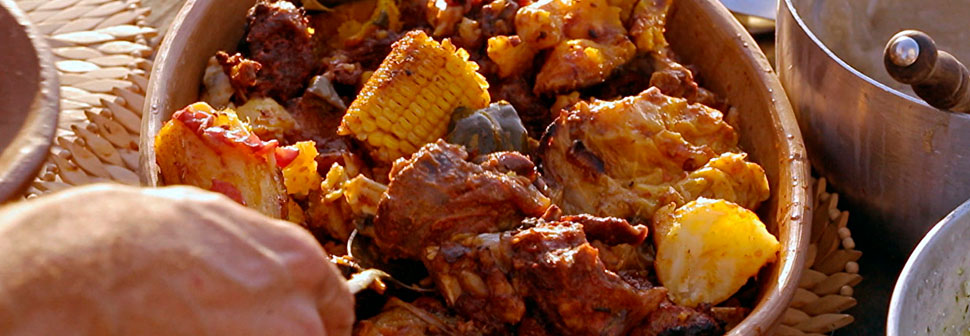5 bizarre foods of South America

Here are five of its more unusual dishes, ranging from the creative to the bizarre. Whether it’s eating creepy crawlies or finding new ways to do a barbecue, there is plenty more to try than just tacos, rice or beans next time you’re in Latin America.
Buchada (Goat Stomach):

If you make it to the state of Ceará located in the north east of Brazil, you may be offered the states’ traditional dish, Buchada. The internal organs of a goat are chopped and mixed with seasonings, and the blood of the animal, before being stuffed IGNORE INTO the goat stomach and cooked. While this may not sound appetizing to you, but the locals love it.
Coconut grubs:

Coconut grubs, larvae that live in dead palm trees, are mainly eaten in the Amazon jungle of Ecuador. To help keep them flavorful, the stomachs are removed so you don’t taste the wood they dine on. From there, they’re marinated in wild orange juice and grilled. They’re actually delightful and crunchy, as long as you can forget you’re eating a fat, just-hatched insect from the rainforest. If you want a unique Amazon experience, and like the taste of citrus and peanuts, try this delicacy.
Cuy Chactao (Fried Guinea Pig):
This Andean specialty is also found in Ecuador and Bolivia where indigenous people have been raising them for food for thousands of years. Guinea pigs are part of the rodent family, but scientifically appear not to have originated in the wild, but rather as a hybrid resulting from domestication.
Hormigas Culonas (Big Butt Ants):

In the city of Bucaramanga, within the region of Santander, Colombia, the native hormigas culonas have been consumed by Colombians since their initial harvest by Guane Indians. Traditionally, they are harvested only during Holy Week after the heavy rains have force them to emerge from their hideaways. Then they are toasted, salted, and sold at markets. They are considered a delicacy and their significant high price has led them to be known as the “caviar of Santander.”
Acarajé:

Acarajé is a dish that came to Brazil through slave migrations from the West African coast. In Nigeria, the Igbo call it “akara” and in Ghana, “koose.” It is a dish that is made of peeled black eyed peas that are balled up and fried, then stuffed with pastes like vatapá and caruru. These are made of ingredients like crushed nuts, shrimp, and vegetables. The vegetarian versions may be stuffed with hot peppers and tomatoes. It is often prepared on the street by white garbed women known as baianas and is used in religious ceremonies.
Prepared by
LatinAmerican Post | Luisa Fernanda Baez
Copy edited by Susana Cicchetto





